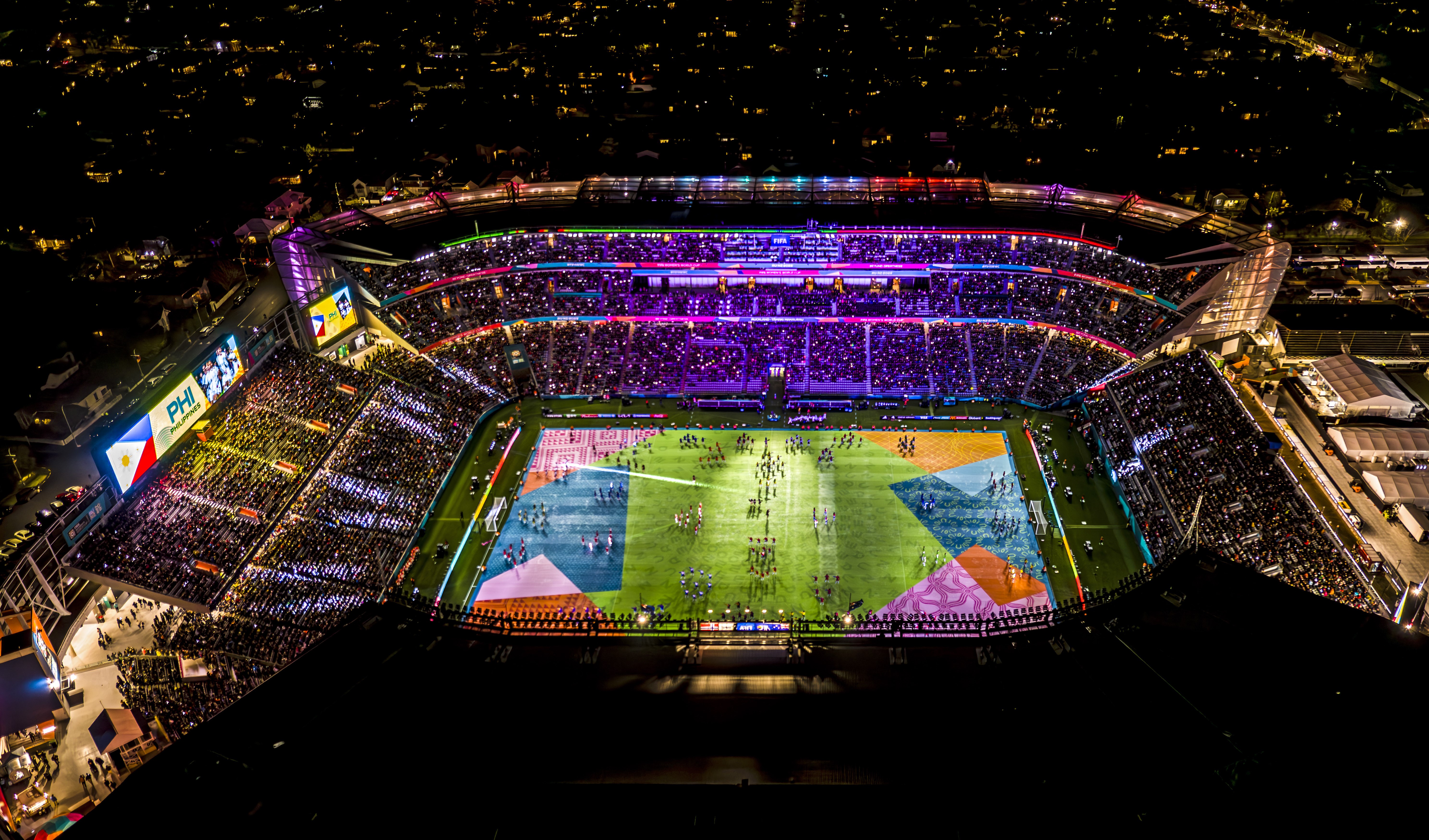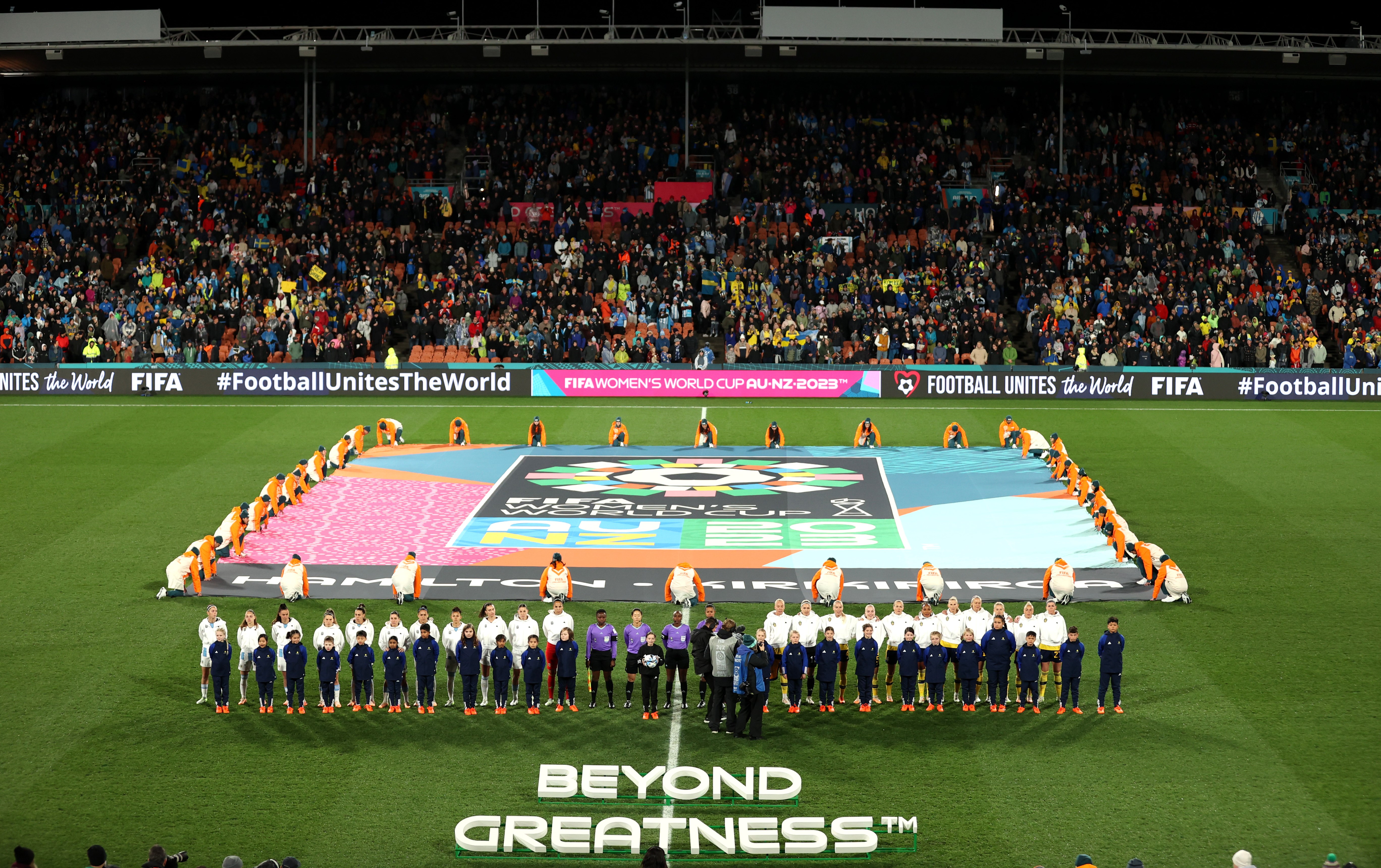Type
File
PDF, 1.3MB, 80 pages


An independent economic impact evaluation report on the FIFA Women’s World Cup 2023™ confirms the event delivered more than Aotearoa New Zealand hoped for and was hugely successful across all key measures.

Photo provided by Eden Park Trust.
The FIFA Women’s World Cup Australia & New Zealand 2023™ was the largest and most successful women’s sporting event ever, exceeding expectations on and off the field. It captured the hearts of the nation, elevated women’s football and sport more generally while cementing Aotearoa New Zealand’s global reputation as an exceptional major event host and tourism destination.
While the on-field action captivated the nation, with more than 60% of Kiwis watching a match on TV or online, the report shows the economic returns were even greater than forecast for Aotearoa New Zealand.
The report shows a strong overall economic return with a net benefit to Aotearoa New Zealand of $109.5 million.
A benefit-cost ratio of 1.34 was identified, in other words for every $1 put in, Aotearoa New Zealand saw a return of $1.34.
Over 740,000 tickets were issued across the 29 matches hosted in Aotearoa New Zealand. In addition to this, there were around 170,000 visits to FIFA Fan Festival sites in Auckland, Hamilton, Wellington and Dunedin.
Almost 27,000 international visitors followed the tournament to our shores, generating 312,008 visitor nights, with an average stay of 11.6 nights per person and collectively spending $80.4 million.
These economic results build on Aotearoa New Zealand’s successful track record of hosting large-scale events and continue to show the benefits both on and off the field of hosting women’s sport events.

Photo by Fiona Goodall – FIFA/2023 FIFA via Getty Images
This web version of the FIFA Women's World Cup 2023 National Economic Impact Evaluation consists of an extract of the Executive Summary from the full official evaluation report.
The official electronic version of the FIFA Women's World Cup 2023 National Economic Impact Evaluation is provided in PDF format below. Additional information, including Impact on New Zealand, Cost-benefit analysis and appendices can be found in the PDF version of the report.
This evaluation has identified a net benefit to New Zealand of co-hosting the FIFA Women’s World Cup Australia and New Zealand 2023™ of $109.5 million and a benefit-cost ratio (BCR) of 1.34. These are strong results relative to: (a) the projections developed in 2019; (b) national benchmarks for other sports events in New Zealand involving more than 10,000 attendees; and (c) the investment of $101.1 million in the FIFA Women’s World Cup Australia and New Zealand 2023™ by central and local government agencies. Spectator satisfaction was also high and comfortably outperformed national benchmarks.
In addition to strong economic results, this evaluation finds that hosting the FIFA Women’s World Cup Australia and New Zealand 2023™ delivered a wide range of intangible benefits for football, women and communities in New Zealand including achievement of the government’s key objective of “increasing the visibility of, and value placed on, women in sport and wider society”. Research shows the benefits extended beyond these groups to a large and diverse segment of New Zealanders.
Source: FIFA Women’s World Cup Australia and New Zealand 2023™ Impact Evaluation, Event Economics
| Measure | Result for FIFA WWC (2023) | Projections for FIFA WWC (2019) | National benchmark for large sports events1 |
| Net benefit ($m) | $109.5 | $46.3 | $1.1 |
| Benefit-cost ratio | 1.34 | 1.29 | 1.28 |
| International visitors | 26,915 | 22,706 | 105 |
| International visitor nights | 312,008 | 335,090 | 942 |
| Spectator satisfaction | 97% | n/a | 92% |
| Spectator Net Promoter Score | 75 | n/a | 58 |
Other key results for New Zealand include:
PDF, 1.3MB, 80 pages
PDF, 7.7MB, 36 pages
Economic Impact Evaluation reports have also been completed by each Host City for their region and those reports can be found here:
[1] Involving more than 10,000 attendees and evaluated using the Event Economics methodology. Many of these benchmark events were impacted by COVID-19, particularly in terms of international attendance.
[2]FIFA had not yet released its global broadcast estimates at the time of writing so the results in this report are best estimates based on available information and may be subject to change.
Crown copyright © 2024
https://www.majorevents.govt.nz/fifa-womens-world-cup-australia-and-new-zealand-2023/event-outcomes
Please note: This content will change over time and can go out of date.